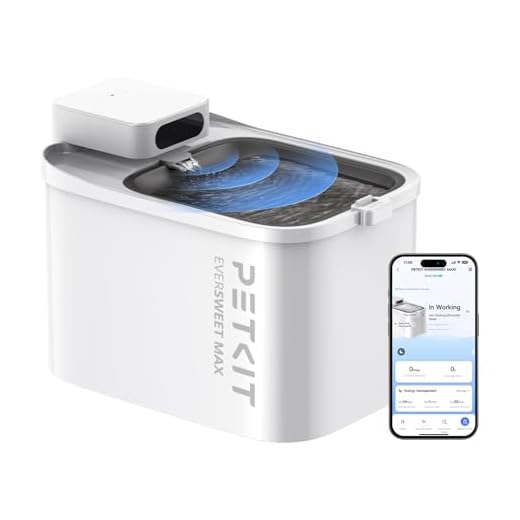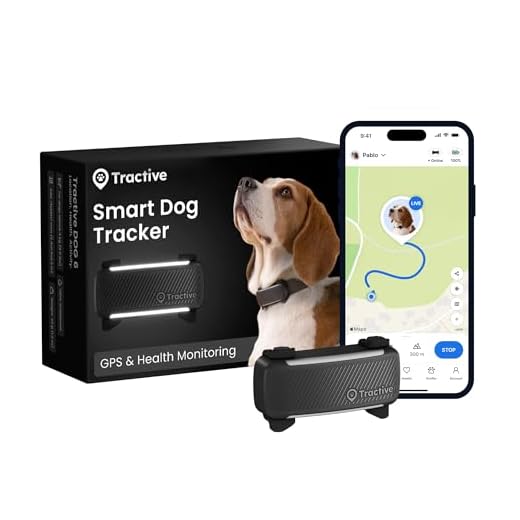




Observe closely, as your furry friend might exhibit unusual behaviour following an episode of convulsions. It’s common to notice signs of disorientation, such as wandering aimlessly or staring blankly into space. This state, often referred to as the postictal phase, typically lasts from a few minutes to several hours, depending on the individual. During this time, providing a calm and quiet environment is crucial to help them regain composure.
Be prepared for potential changes in mood or temperament. Some may seem anxious or restless, while others might seek comfort through cuddling or staying close to you. It’s important to offer reassurance, speaking softly and gently to help alleviate their confusion. Hydration is key, so encourage them to drink water, but avoid forcing it if they seem reluctant.
If you notice persistent disorientation or unusual behaviour lasting beyond a few hours, consult a veterinarian. Keeping a detailed log of their symptoms can aid in providing effective information during your visit. Remember, every canine is unique, and understanding their individual response can greatly enhance their recovery and emotional well-being.
Behaviour Post-Seizure
Following an episode, you’ll likely observe significant changes in your pet’s demeanor. Many companions display signs of confusion or disorientation, which can last from a few minutes to several hours. They may seem unsteady on their feet or wander aimlessly, seemingly unaware of their surroundings.
In some instances, a companion might seek comfort from you. They may lean against you or nuzzle into your side, looking for reassurance. This is their way of reconnecting after the distress of the episode. It’s crucial to be patient and gentle during this time, as they may be frightened or anxious.
Physical signs might also be present. Excessive drooling or panting could occur, alongside trembling or muscle twitching. Keep an eye on their breathing; any irregularities should prompt a visit to the vet.
Appetite can fluctuate significantly. Some may refuse food altogether, while others may show increased hunger as they return to normalcy. Monitor their eating habits and encourage hydration, especially if they seem lethargic.
Rest is common. Your furry friend may seek a quiet spot to sleep, using this time to recover. It’s advisable to create a calm environment, free from loud noises or distractions, to help them feel secure.
Be observant for any unusual behaviours in the days following. If you notice recurring symptoms or a shift in their usual temperament, consulting a veterinarian is wise. Each animal responds differently, and understanding their unique needs is vital for their wellbeing.
Immediate Behaviour Changes Following a Seizure
Following an episode, the shift in your pet’s demeanour can be quite startling. Commonly, there’s disorientation; they may seem lost or confused, wandering aimlessly or staring blankly. It’s crucial to offer a calm environment as they regain their bearings.
Watch for signs of anxiety or agitation. Some may pace or pant, while others might seek comfort from you, leaning against your leg or resting their head on your lap. Providing gentle reassurance during this period can help alleviate their stress.
Physical coordination often appears impaired immediately. A pet might struggle to stand or walk steadily, which can be alarming. Ensure their surroundings are safe to prevent accidents while they recover.
Increased thirst is common; offering fresh water can be beneficial. Keep an eye on their appetite too, as some may refuse food for a short while. If this persists beyond a few hours, consult your vet.
Monitor for any unusual vocalisations. Some may whine or bark as they regain composure, indicating distress or confusion. Engaging with them softly can ease their nerves.
Every animal is unique, and responses can vary widely. Keeping a record of their behaviour can be helpful for veterinary consultations. Be patient and observant, as your furry friend navigates this unsettling experience.
Common Postictal Symptoms in Dogs
After experiencing a convulsion, many canines may exhibit a range of typical postictal signs. Observing these behaviours can help caregivers provide the necessary support during recovery.
Physical Signs
- Disorientation: A pet may seem confused or have difficulty recognising familiar surroundings.
- Muscle Tremors: Shaking or twitching can occur as the body gradually relaxes.
- Increased Thirst: Many companions drink more water than usual following an episode.
- Fatigue: Tiredness is common; resting or sleeping frequently helps regain strength.
Behavioural Changes
- Anxiety or Restlessness: Some may appear nervous or agitated, pacing or seeking reassurance.
- Altered Sensitivity: Increased sensitivity to noise and light can manifest, leading to avoidance behaviour.
- Vocalisation: Whining or barking without a clear reason might indicate distress or confusion.
- Altered Interaction: A pet may seek more attention or, conversely, prefer solitude during recovery.
Monitoring these signs helps ensure a comfortable and supportive environment for your furry friend. Each companion’s recovery process varies, so patience is key.
How to Recognise Signs of Disorientation
Pay attention to changes in behaviour immediately following an episode. Disorientation may manifest in various ways, and recognising these signs can be crucial for your pet’s well-being.
Common Indicators of Disorientation
- Confusion: Your furry friend may seem lost or unsure of their surroundings. They might wander aimlessly or appear to forget familiar spaces.
- Staring: A vacant stare or lack of response to stimuli can indicate that they are not fully aware of their environment.
- Unusual Vocalisations: Increased barking or whining without clear cause can signify distress or confusion.
- Aggression or Fear: An otherwise friendly companion may show signs of aggression or fear, reacting defensively to things that normally don’t bother them.
Behavioural Changes to Monitor
- Altered Interaction: A shift in how they engage with you or others. They may be more withdrawn or overly clingy.
- Disorientation in Movement: Stumbling or difficulty with coordination can be a sign of confusion.
- Increased Pacing: Restlessness or pacing back and forth may indicate disorientation or anxiety.
- Changes in Appetite: A sudden loss of interest in food or treats might reflect their altered state of mind.
Monitor these signs closely and consult your veterinarian if you notice persistent disorientation. Understanding these behaviours can aid in providing the appropriate support and care for your canine companion.
Understanding Changes in Appetite and Thirst
Following a convulsion, you might notice alterations in your furry friend’s eating and drinking habits. It’s common for them to experience a temporary decrease in appetite. This can be attributed to the stress or confusion that often accompanies the postictal state. Monitor their food intake closely. If they refuse to eat for more than 24 hours, consult your vet to rule out any underlying issues.
Hydration Needs
In the aftermath, it’s crucial to keep water readily available. Affected canines might also show changes in thirst. While some may drink more due to the exhaustion from the episode, others might not feel inclined to hydrate. Offering ice cubes or ice chips can entice them to drink, especially if they seem hesitant. Always ensure they have access to fresh water; dehydration can lead to further complications.
Behavioural Observations
Keep an eye on their interactions with food and water bowls. If there’s an unusual reluctance to approach these, it might indicate lingering disorientation. If this behaviour persists, or if you notice any other concerning symptoms, seeking veterinary advice is paramount. Remember, every situation is unique, and understanding your companion’s specific reactions is key to their recovery and well-being.
Monitoring for Physical Weakness or Lethargy
After an episode, pay close attention to signs of fatigue or unusual sluggishness. These symptoms can manifest as a reluctance to move, difficulty standing, or an overall lack of energy. Keep a watchful eye on your furry friend during the recovery phase, as some may need extra support.
It’s essential to provide a calm environment where your pet feels safe. Soft bedding and a quiet space can aid in their recovery. If you notice persistent weakness, consult your veterinarian. They may suggest adjusting nutrition or exploring other health concerns.
Hydration is critical, so ensure fresh water is accessible. Sometimes, changes in appetite can accompany lethargy, so monitor eating habits closely. If your furry companion shows interest in chewing their feet, consider looking into the best dog food for dogs that chew their feet, as it may help address underlying issues.
Routine check-ins will help you gauge their recovery. If weakness lasts more than a few hours or worsens, reach out to a vet promptly for further advice. Being proactive can make a significant difference in their well-being.
When to Seek Veterinary Assistance After a Seizure
If your furry companion experiences a convulsion, it’s critical to monitor their condition closely. If the episode lasts longer than five minutes or if multiple episodes occur in a short period, immediate veterinary intervention is necessary. Prolonged seizures can lead to serious complications, including brain damage.
Signs Indicating a Need for Help
Look for unusual behaviours that persist beyond the immediate aftermath. If your pet shows signs of extreme confusion, disorientation, or any difficulty in movement, getting professional advice is advisable. Additionally, if there are visible injuries or signs of distress like difficulty breathing, seeking help right away is crucial.
Consulting Your Veterinarian
After the first instance, it’s wise to schedule a follow-up appointment, even if your pet seems to recover well. A thorough examination and possibly diagnostic tests can help determine the underlying cause. Be ready to provide details about the event, including duration, frequency, and any unusual behaviours observed before or after the episode. This information can be invaluable in creating an effective treatment plan.
Creating a Comfortable Environment for Recovery
After a convulsion, providing a calming space is crucial. Start by selecting a quiet area where noise and activity are minimal. Soft bedding can help make this place inviting and soothing. I remember when my Labrador had his first episode; I quickly realised how important it was to have a familiar blanket nearby. It seemed to bring him comfort amidst the confusion.
Temperature and Lighting
Maintaining a comfortable temperature is key. A cool, well-ventilated space can prevent overheating, especially if the weather is warm. Adjust the lighting as well; soft, diffused light can help ease any disorientation. I often use sheer curtains to soften harsh sunlight. If your furry friend appears sensitive to bright lights, consider using lamps with dimmable features.
Minimising Stressors
Reducing stressors is vital during recovery. Keep other pets away initially to prevent any added anxiety. Speak softly when interacting, as loud voices can be overwhelming. I found that gentle petting and reassurance helped my companion feel safe. Avoid sudden movements or loud noises that might startle him; instead, create a serene atmosphere where he can relax.
| Recovery Tips | Description |
|---|---|
| Quiet Space | A secluded area with minimal distractions. |
| Soft Bedding | Use familiar blankets or cushions for comfort. |
| Temperature Control | Maintain a cool, comfortable environment. |
| Gentle Interaction | Speak softly and reassure with gentle touches. |
| Limit Visitors | Avoid having too many people around initially. |
Creating a supportive environment can significantly aid in recovery. Observing their needs and adjusting the surroundings can make all the difference. Remember, patience is key as they navigate this challenging time.










